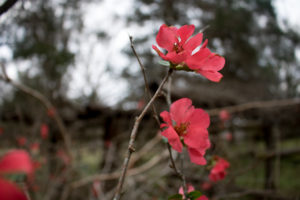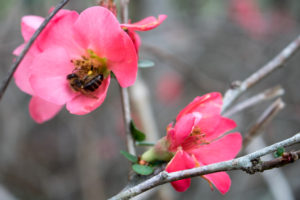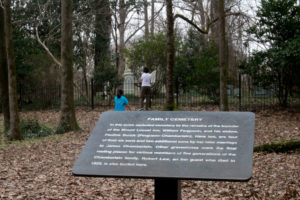One of the main reasons we embarked on this unorthodox way of life is so that our children would see many, many different places and learn about our country’s history in a real and lasting way. Mostly this is good. In the case of slavery, not so much.
“How much do you get paid when you’re a slave?”
“So just because people had brown skin, they were slaves?”
“Families couldn’t stay together? It was illegal to leave? Were all the white people mean?”
“Thank God we don’t have slavery TODAY, right, Mommy?”
What kind of answers can I give to these questions? The facts don’t begin to cover the whole story. I’m trying to make them understand what the Underground Railroad was and who loved all people and who just lived as their parents lived and who taught slaves to read and who beat them like animals. It’s this vast, nasty business and my precious, innocent daughters stare wide-eyed as we go through 150-year old properties that simply fell apart after the Civil War. Why? Because they couldn’t function without slave labor, the slow and deliberate ruin of humans made in God’s image.
Years ago, at BCA, Reagan studied slavery in conjunction with lessons on President Lincoln. I remember sitting at the corner of Brodie and Slaughter while she quizzed me about the logic of skin color deciding someone’s value. It was a concept she could not wrap her mind around and she has returned to it many times over the years. It’s different here, though. It’s one thing to talk about slavery in a simple unit study of the 16th president. It’s entirely different to hold cotton bolls in her little, light brown hands and walk through silent slave cabins, which if one listens closely, aren’t all that silent. I’m torn between my desire to give her knowledge and my mommy instinct that wants to place her in bubble wrap and run away somewhere safe and clean and really unreal.
We visited an old plantation that is now a national park. It sits right on the Natchez Trace, a buffalo trail turned Indian/trapper path turned hiker’s road turned 50 mph scenic highway. The property includes two cemeteries. The first was for slaves. One pathetic, half-rotten stone remains to mark the graves of at least ten people. A crooked, split-rail fence surrounds it. It is far from the main house, hidden. The family’s graveyard is situated behind a strong, black iron fence. The markers are stone and marble, elegant and elaborate. Five generations tidily marked, each with his/her own monument. The difference is startling, revealing and disturbing especially when seen through the eyes of a ten-year-old and her “I’m almost eight!” sister. I think as adults we (long ago) accepted our country’s vile past and perhaps the retelling of the story has made us jaded or immune to the tragedy of slavery.
It’s like with Jesus. He died on the cross. Christians say it all the time, maybe too often. Maybe if we whispered it to our children once a year and watched their faces alight first with understanding, then with horror and grief, then we wouldn’t take His sacrifice for granted or treat it like a commonality or a perfectly sensical act.
Our girls are thoroughly aghast, full of questions, eyes glistening as we studied Harriet Tubman today (I customize their history/geography lessons based on our current location). They want more information and I try to find balance between honesty and sharing age-appropriate details especially when it comes to modern day slavery which very much still exists. It’s a responsibility and in a way, I’m honored to tell the slaves’ story and I’m definitely so grateful my girls are shocked by it.




